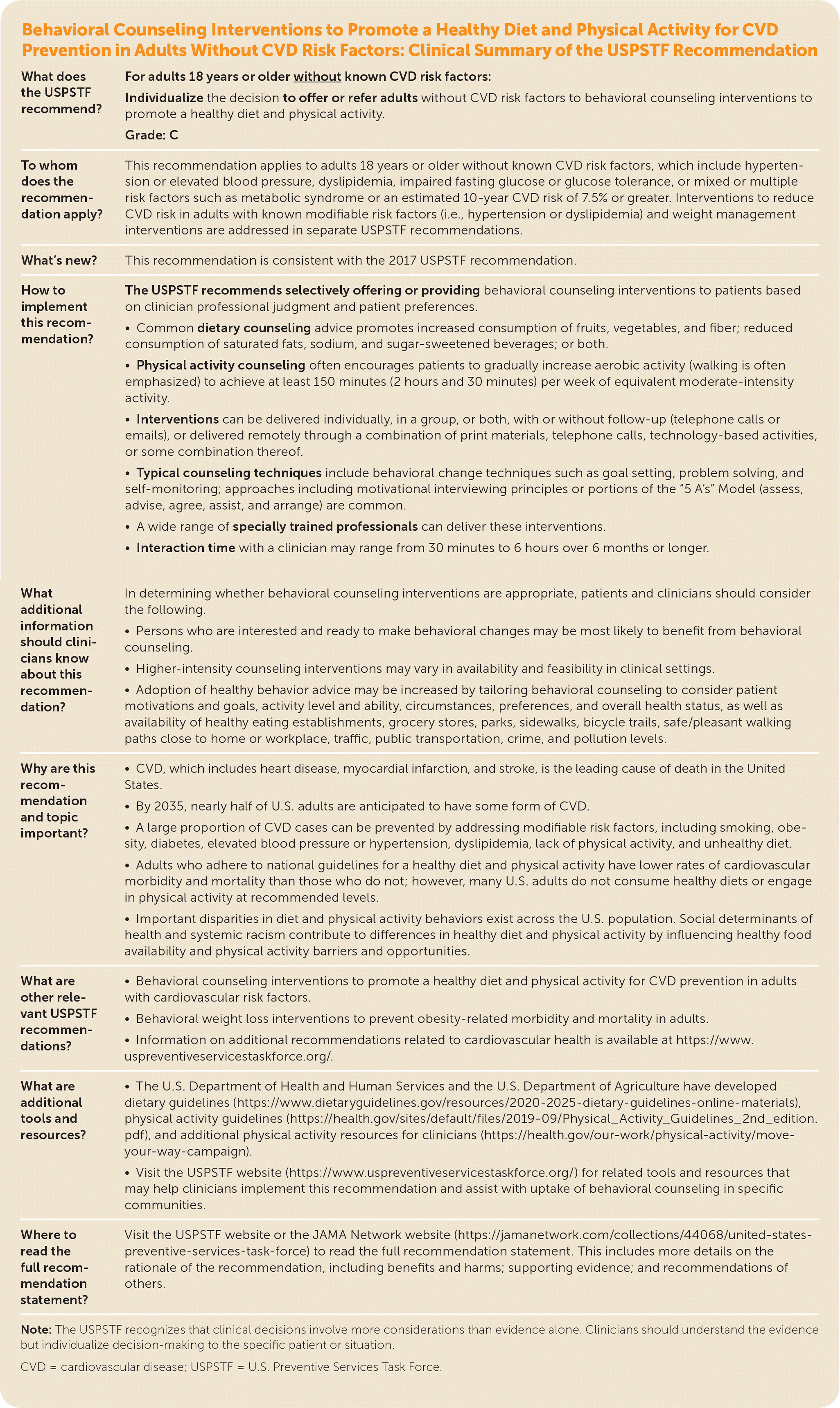
Am Fam Physician. 2022;106(4):online
Related Putting Prevention Into Practice: Behavioral Counseling Interventions to Promote a Healthy Diet and Physical Activity for CVD Prevention in Adults Without CVD Risk Factors
As published by the USPSTF.

| What does the USPSTF recommend? | For adults 18 years or older without known CVD risk factors: Individualize the decision to offer or refer adults without CVD risk factors to behavioral counseling interventions to promote a healthy diet and physical activity. Grade: C |
| To whom does the recommendation apply? | This recommendation applies to adults 18 years or older without known CVD risk factors, which include hypertension or elevated blood pressure, dyslipidemia, impaired fasting glucose or glucose tolerance, or mixed or multiple risk factors such as metabolic syndrome or an estimated 10-year CVD risk of 7.5% or greater. Interventions to reduce CVD risk in adults with known modifiable risk factors (i.e., hypertension or dyslipidemia) and weight management interventions are addressed in separate USPSTF recommendations. |
| What's new? | This recommendation is consistent with the 2017 USPSTF recommendation. |
| How to implement this recommendation? | The USPSTF recommends selectively offering or providing behavioral counseling interventions to patients based on clinician professional judgment and patient preferences.
|
| What additional information should clinicians know about this recommendation? | In determining whether behavioral counseling interventions are appropriate, patients and clinicians should consider the following.
|
| Why are this recommendation and topic important? |
|
| What are other relevant USPSTF recommendations? |
|
| What are additional tools and resources? |
|
| Where to read the full recommendation statement? | Visit the USPSTF website or the JAMA Network website (https://jamanetwork.com/collections/44068/united-states-preventive-services-task-force) to read the full recommendation statement. This includes more details on the rationale of the recommendation, including benefits and harms; supporting evidence; and recommendations of others. |
The full recommendation statement is available at https://www.uspreventiveservicestaskforce.org/uspstf/recommendation/healthy-lifestyle-and-physical-activity-for-cvd-prevention-adults-without-known-risk-factors-behavioral-counseling.
The USPSTF recommendations are independent of the U.S. government. They do not represent the views of the Agency for Healthcare Research and Quality, the U.S. Department of Health and Human Services, or the U.S. Public Health Service.
